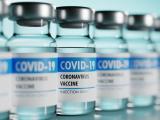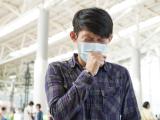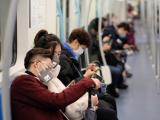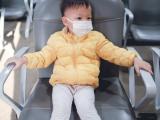May 7, 2003 (CIDRAP News) – The World Health Organization (WHO) today estimated the overall fatality rate for SARS (severe acute respiratory syndrome) patients at 14% to 15%, significantly higher than previous estimates. The agency estimated the rate for people older than 64 years to be more than 50%.
The revised WHO estimates, based on data from four countries, came on the heels of a Lancet article in which researchers studied case records from Hong Kong and calculated a case-fatality ratio as high as 55% for patients aged 60 and older.
In the early stages of the SARS epidemic, health officials estimated the mortality rate at less than 4%. More recently, officials have cited rates in the 6% to 7% range. Today's SARS figures from the WHO—6,903 cumulative cases and 495 deaths—point to a case-fatality ratio of 7.2%. But WHO officials note that this calculation underestimates the rate, since some currently ill patients will die of the disease.
The WHO based its estimates on an analysis of the latest data from Canada, China, Hong Kong, Singapore, and Vietnam. "On the basis of more detailed and complete data, and more reliable methods, WHO now estimates that the case fatality ratio of SARS ranges from 0% to 50%, depending on the age group affected, with an overall estimate of case fatality of 14% to 15%," the agency's announcement said.
The fatality ratio is less than 1% for people younger than 25, 6% for those aged 25 to 44, 15% for those aged 45 to 64, and more than 50% for people 65 or older, officials said.
WHO officials observed that calculating the case-fatality ratio for a disease outbreak is difficult while the outbreak is still evolving. The true ratio cannot be determined until the outbreak is over, when the total numbers of deaths and recoveries are known.
One method the WHO used was to calculate the case-fatality ratio using only the cases whose final outcome was known. With this method, ratios ranged from 11% to 17% for Hong Kong, 13% to 15% for Singapore, 15% to 19% for Canada, and 5% to 13% for China. But since the outbreak is continuing, this method "gives an overestimate because the average time from illness onset to death for SARS is shorter than the average time from illness onset to recovery," officials said.
The agency also used "a more accurate and unbiased" method of estimation, survival analysis, which looks at the time from illness onset to death or full recovery. This approach showed case-fatality ratios of 14% in Singapore and 15% in Hong Kong.
"In Viet Nam, where SARS has been contained and measurement is more straightforward, case fatality was comparatively low, at 8%," the WHO said. "One explanation for this is the large number of total cases that occurred in younger, previously healthy health care workers."
In the Lancet report, published online today, researchers from Hong Kong and London describe their analysis of the 1,425 SARS cases reported in Hong Kong through Apr 28. The authors used two statistical methods to calculate mortality rates. One method showed a fatality rate of 13.2% (95% confidence interval [CI], 9.8% to 16.8%) in patients younger than 60 and a rate of 43.3% (95% CI, 35.2% to 52.4%) in those 60 and older. The other method indicated rates of 6.8% (95% CI, 4.0 % to 9.6%)for younger patients and 55.0% (95% CI, 45.3% to 64.7%) for those 60 and older.
The authors note that they included only patients who were hospitalized for SARS treatment. "If additional infections in the community do not lead to admission to hospital or death, the case fatality rate based on all infections would be lower," they state.
The study also indicated an average SARS incubation period of 6.4 days (95% CI, 5.2 to 7.7 days). WHO has estimated the incubation period at 2 to 7 days, with a maximum of 10 days. The Lancet article also reported that the average time from onset of symptoms to hospital admission varied from 3 to 5 days, with longer times early in the epidemic.
"Although this study shows that the fatality rate from SARS is higher than previously thought, we now know that public health interventions have been successfully reducing the spread of the disease," said first author Christl A. Donnelly in a news release from Imperial College London. "Key among these is the movement of those identified with SARS into hospital quarantine as swiftly as possible, and we urge that this measure continues to receive high priority."
Also today, the WHO reaffirmed its estimate that the maximum SARS incubation period is 10 days. "WHO has analyzed the incubation periods of individuals with well-defined single-point exposures in Singapore, Canada, and Europe," officials said. "Findings support the original estimate of 10 days." However, the agency said it will look more carefully at one analysis of data from Hong Kong, which indicated a longer maximum incubation period in a group of 57 patients.
In other SARS developments:
- The Centers for Disease Control and Prevention (CDC) yesterday stopped warning Americans not to travel to Singapore, saying the SARS outbreak there has been contained. "They have gone more than 20 days, or more than two incubation periods, without a new case in Singapore," CDC Director Julie Gerberding, MD, said during a news briefing.
- Health and Human Services (HHS) Secretary Tommy Thompson today announced an agreement with Chinese health officials to step up US-Chinese collaboration to detect and manage infectious diseases, including SARS. Thompson said he and Chinese Health Minister Wu Yi agreed in a telephone conversation to increase cooperation on epidemiologic training and development of laboratory capacity in China. The efforts will increase the number of HHS personnel working in China.
- Gerberding said the CDC filed for a patent on its discoveries regarding the SARS coronavirus in order to protect public access to the material. "We could be locked out of the opportunity to work with this virus if it's patented by someone else, and so by initiating steps to secure patent rights, we assure that we will be able to continue to make the virus and the products from the virus available in the public domain," she said at the news briefing.
See also:
WHO report on SARS case-fatality ratio
http://www.who.int/csr/sarsarchive/2003_05_07a/en/
Lancet report on case-fatality rates in Hong Kong
http://image.thelancet.com/extras/03art4453web.pdf
Imperial College London news release
http://www.ic.ac.uk/P4158.htm
Transcript of May 6 CDC news briefing
http://www.cdc.gov/media/transcripts/t030506.htm


















